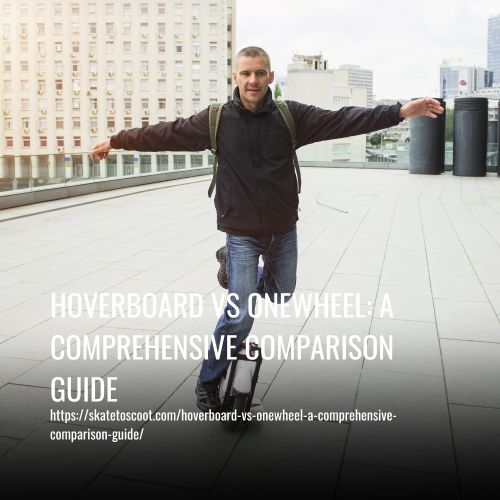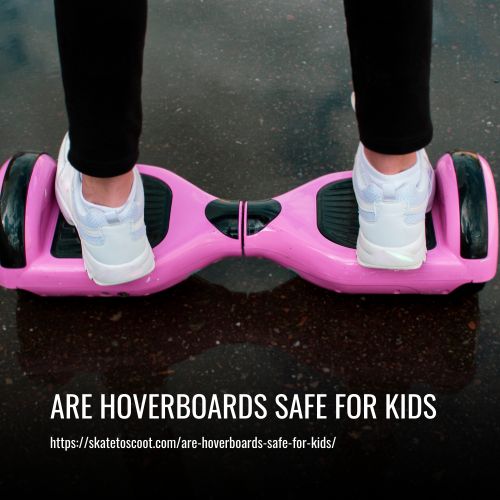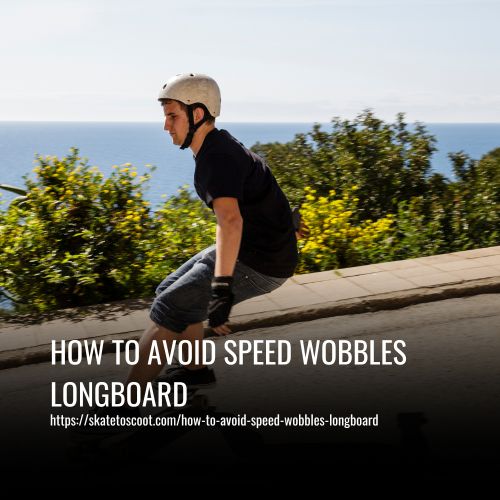As an Amazon Associate we earn from qualifying purchases.
Are you torn between getting a hoverboard or an Onewheel for your next adventure? Both are popular personal transportation devices that offer a unique riding experience. But which one is better?
In this comprehensive comparison guide, we’ll take a closer look at the similarities and differences between hoverboards and Onewheels. We’ll explore the key features of both devices, including speed, range, maneuverability, and safety.
The Key Differences Between Hoverboard And Onewheel Are Below:
- Stance.
- Wheel size.
- Handling.
- Tricks & stunts.
- Uphill Climbing.
- Terrain Handling.
- Turning Circle.
- Range.
- Self-Balancing.
- Easy to Learn.

Key Difference Between Hoverboard vs Onewheel
The key difference between hoverboards and Onewheels is the way they’re ridden.
1. Stance:
Hoverboards require riders to stand in a forward-facing position or at a right angle to the wheel rotation axis. This stance can pose stability issues, especially when navigating rough or uneven terrain, as it solely relies on the rider’s vertical stability. On the other hand, Onewheels allow riders to adopt a side-on stance, similar to how one would stand when skateboarding or snowboarding. Additionally, the Onewheel features a large wheel sticking out of the center, affording greater stability to the rider.
The side-on stance of the Onewheel also enables riders to shift their weight backward and forward, which is crucial when navigating rough terrains and making sharp turns. In comparison, riders of hoverboards may find it challenging to make these moves without risking a fall. Therefore, the Onewheel comes out ahead of hoverboards when it comes to stability and maneuverability.
2. Wheel size:
When it comes to hoverboards and Onewheels, one of the most important factors to consider is wheel size. Hoverboards typically come equipped with wheel diameters ranging from 6” to 10”. Among these, the 10” wheels are best suited for higher speeds. On the other hand, the Onewheel Pint comes equipped with a tire diameter of 10.5”, while the Onewheel XR sports an 11.5” tire diameter.
Considering cost and weight, the hoverboard’s smaller tires have a clear advantage. Onewheel tire replacements are generally more expensive, especially for the larger Onewheel XR. Additionally, lighter tires make hoverboards more portable and easier to carry around.
3. Handling:
Hoverboards are generally easier to maneuver than the Onewheel despite being slower. They are able to handle most tight corners, assuming they are able to fit around them due to the hoverboard’s wide profile. On the other hand, the Onewheel has the speed and agility to handle tight turns and even a few tricks.
Its slim profile makes it well-suited for nailing the tightest turns with ease. When it comes to handling, it really depends on personal preference and riding style. Some riders may prefer the simplicity and ease of a hoverboard, while others may prefer the speed and maneuverability of the Onewheel.
4. Tricks & stunts:
Hoverboards are not designed for tricks and stunts, and attempting to do so may result in limited success due to their design. However, it is possible to jump 180 and flip your stance on a hoverboard due to the rider’s orientation and the wheels’ ability to handle some holes in the surface.
On the other hand, Onewheels are better suited for tricks and stunts such as small ramps and low ledges, making them ideal for skateboarding and rough terrain. With a Onewheel, riders can try straightforward tricks on demanding terrain because the board stays upright.
5. Uphill Climbing:
When it comes to uphill climbing, hoverboards and Onewheels have their own strengths and limitations. Hoverboards are not recommended to be used on hills greater than 18 degrees, but more powerful models may be able to handle steeper inclines. On the other hand, Onewheels can climb hills of up to 15% grade or 9 degrees without any issue.
Despite Onewheel’s slightly lower uphill climbing capacity, it is important to note that they offer an incline-assist technology that makes climbing hills much easier and less strenuous. Hoverboards also have this technology, which helps take the effort out of climbing and descending hills.
6. Terrain Handling:
When it comes to handling different terrains, the Onewheel and hoverboard have their strengths and weaknesses. Hoverboards are designed to work best on smooth pavements and indoor floors. Although they can handle small road bumps, they are not suitable for uneven surfaces and rough ground.
On the other hand, Onewheel has tires similar to those of go-karts which makes them more capable of handling off-road and rough terrains. They are designed to handle bumpy, rough ground with ease and can be taken off-road for more adventurous experiences.
Therefore, for rough terrain and off-road rides, the Onewheel is the clear winner, while the hoverboard should remain on the pavement and smooth surfaces. When it comes to handling terrains, it’s important to choose the device that is best suited to the type of riding you enjoy.
7. Turning Circle:
Turning circle is an important factor to consider when choosing between a hoverboard and a Onewheel. Hoverboards have a zero-turning circle due to having a motor for each wheel, allowing users to turn on the spot.
If you want to spin around until you fall over, the hoverboard has got you covered. On the other hand, the Onewheel has nothing to pivot around and won’t manage a zero-turning circle. However, you can still make tight corners, just not spin on the spot.
8. Range:
Hoverboards and Onewheels vary in range depending on their model. Generally, hoverboards can take the rider up to 15 miles on a single charge, however, smaller and cheaper models tend to have less range.
The Onewheel Pint, on the other hand, can go up to 8 miles on a single charge, which is less than the maximum range of a hoverboard. However, the Onewheel+ XR outperforms both the Pint model and the hoverboard with a range of 12 to 18 miles on a single charge.
When it comes to range, the Onewheel XR is the winner, surpassing both its counterpart – the Pint, and the hoverboard. However, if pricing is a concern and you’re looking for a longer range, a hoverboard may be a better option for you. Ultimately, the choice between the two should be made based on your budget and specific needs.
9. Self-Balancing:
When it comes to self-balancing technology, the hoverboard wins over the Onewheel. With a built-in gyroscope, the hoverboard adjusts itself to stay upright against any external forces. This makes for a simpler ride, especially for beginners who are still working on their balance.
On the other hand, the Onewheel lacks this self-balancing technology and requires riders to maintain proper orientation themselves. This may prove to be a problem for those who are not adept skaters, making the learning curve slightly steeper.
10. Easy to Learn:
When it comes to comparing hoverboards vs onewheel, one of the most important factors to consider is the ease of learning.
While hoverboards may feel quite different from other modes of transportation at first, the learning curve is small. With a hoverboard, you simply step on and it will balance itself. From there, it’s a matter of leaning forward and backward to move in the desired direction. Once you’ve developed some balance and become comfortable with the throttling, using a hoverboard is quite easy.
On the other hand, the Onewheel offers slightly more intuitive controls than a hoverboard, but that doesn’t necessarily mean it’s easier to learn. Compared to skateboards, which can also be difficult to master, the lack of auto-balancing makes the Onewheel a much more complicated device. As a result, unless you have prior experience with boards, the Onewheel may not be beginner-friendly.
11. Aesthetics:
When it comes to appearance, the debate on whether hoverboards are cool to ride or not is still ongoing. While some may argue that the futuristic design has its appeal, the general consensus is that it’s not the most stylish option out there. If you’re a beginner, the struggle to maintain balance can be quite noticeable, causing your arms to flail around and detracting from any sense of coolness.
On wheels, on the other hand, can look quite futuristic and stylish if you know what you’re doing and have a good sense of balance. However, as with most things, beginners may not look their best while riding one.
12. Customization:
Looking to accessorize your hoverboard or Onewheel? There are options for both, but the level of customization may depend on the device you choose. With hoverboards, there are plenty of aftermarket options for decals, skins, and LED lights to give your board a personalized touch.
The Onewheel only allows for footpad customization, but the official website provides various customization packages that offer accessories like guard rails, fenders, bumpers, and stands to personalize your ride.
While hoverboards have more aftermarket options, Onewheel wins in terms of factory customization options. Ultimately, the level of customization is a personal preference, and both devices offer ways to make your ride your own.
13. Model Selection:
When it comes to model selection, hoverboards have the upper hand. With a plethora of manufacturers producing their own spin on the popular device, there is no shortage of options to choose from. On the other hand, Onewheel offers only three proprietary devices – the Onewheel Pint, Pint X, and Onewheel GT.
If variety is what you’re after, then hoverboards are a clear winner. Hoverboards come in various models, each unique to their manufacturer. You can find models designed to suit different riding styles, with features such as powerful motors, different riding modes, and self-balancing technology.
Onewheel’s devices, while efficient and innovative in their own right, may not cater to every individual’s preferences. Manufacturer diversity means that you can choose the hoverboard that fits your need specifically, whether it’s for rough terrains or flat surfaces.
14. Weight Difference:
Hoverboards and Onewheels are both popular among people who love electric personal transportation. When it comes to weight, hoverboards generally weigh around 25lbs, while Onewheels can weigh between 23 and 26lbs, depending on the model.
The weight difference between hoverboards and Onewheels is not significant, and the weight of different models can vary depending on their wheel diameters. However, the Onewheel Pint is known to be lighter than most hoverboards.
Heavier hoverboard models are often made for off-road terrains, and they can be heavier than regular models. In terms of weight, the Onewheel Pint wins over most hoverboards, making it a great option for those looking for a lightweight personal transportation device.
15. Dimensions:
Hoverboards typically measure around 28.5 inches in width, while the Onewheel Pint, the smallest model in the Onewheel lineup, has a width of 30 inches. Larger Onewheel models like the GT are only slightly wider. When it comes to width, hoverboards have a slight advantage over the Onewheel, with a more favorable profile.
16. How safe are they?
Hoverboards and Onewheels are both popular modes of transportation for those seeking a unique and enjoyable riding experience. However, when it comes to safety, they both fall short.
Hoverboards rely solely on self-balancing technology to keep riders upright, which means they have no other safety features. In case of any mishap, riders must rely on their own reflexes to prevent serious injury. In contrast, Onewheels lack even the self-balancing technology that hoverboards offer, placing the rider’s complete balance control in their own hands. As a result, Onewheel riders must be even more careful to avoid accidents.
Both devices require riders to wear a helmet for protection, but beyond this, there are no additional safety measures in place. Therefore, it is important to be an experienced and skilled rider when using either device. Ultimately, when it comes to safety, neither the hoverboard nor the Onewheel emerges as the clear winner. Riders should consider their own abilities and safety preferences before making an informed decision to ride either device.
17. Price Range:
When it comes to price, there is a significant difference between hoverboards and Onewheels. Hoverboards can be purchased for a fraction of the cost of Onewheels with prices ranging between $183 and $327 depending on the model and wheel diameter. On the other hand, the cheapest first-hand Onewheel model is over $1,000, with other models easily surpassing the $2,000 mark.
For those on a budget, purchasing a used Onewheel may be a more affordable option. In terms of price, hoverboards are the clear winner as they are far cheaper than both new and old One wheels. When it comes to deciding whether to invest in a hoverboard or Onewheel, the price difference may be a deciding factor for many consumers.
What Suits Your Personality Best?
When deciding between a Onewheel or a hoverboard, it’s important to consider which one would suit your personality best. Onewheels are single-wheel electric scooters that require a hands-free operation. They have one large wheel and two platforms to stand on, and you control your movement by leaning forward or backward.
On the other hand, hoverboards are also hands-free electric scooters, but they have two wheels of varying sizes connected by a platform to stand on. To determine which option is right for you, consider your personal preferences and style.
Hoverboard – Pros & Cons
Hoverboards offer a great way to get around in an efficient and fun way. There are many pros to consider when choosing a hoverboard, but also some cons.
Pros:
Hoverboards come with both pros and cons. On the positive side, they are relatively easy to learn and are a great starting point for beginners in the electric scooter world. They are also small and lightweight, making them easy to carry and transport anywhere. Plus, their compact size allows for easy storage and packing. Additionally, there are no transport costs associated with hoverboards, as they can be easily carried by hand.
Cons:
However, there are some downsides to consider. While hoverboards are easy to learn, they can take some getting used to, and riders may be at risk of falling off. There is also a small chance of fire accidents with Lithium-Ion batteries if proper care is not taken. Hoverboards are also not allowed in airports, which limits their potential use for travel. Lastly, riding a hoverboard requires a sensitive sense of vertical balance, which may be difficult for some riders to maintain.
Onewheel: Pros & Cons
Onewheels offer a unique and thrilling ride experience that is sure to turn heads. When compared to hoverboards, Onewheels have some distinct advantages as well as some potential drawbacks.
Pros:
When it comes to Onewheels, there are both pros and cons to consider. On the positive side, Onewheels are incredibly fast and can reach speeds of up to 19mph on a smooth surface. They also handle rough terrain quite well, making them a versatile option for riders. Additionally, Onewheels have a fast charging time, with some models reaching a full charge in as little as 20 minutes. And, they can handle inclines of up to 15°, making them a great option for hilly areas.
Cons:
However, there are also some cons to consider. The price tag for a Onewheel can be quite steep, ranging from $950 to $2000. Additionally, the big motor for the large wheel can make some noise, which may be a drawback for riders who prefer a quieter ride. It’s important to weigh both the pros and cons before deciding if a Onewheel is the right choice for you.
Specifications of Hoverboard and OneWheel
Hoverboard Specifications: Hoverboards usually come with two large wheels powered by a battery and motor. Most hoverboards have a maximum speed of 10 mph and can travel up to 10 miles on a single charge. They typically come with gyroscopes for self-balancing and Bluetooth speakers to connect to your smartphone.
Onewheel Specifications: Onewheels are electric-powered boards with one large wheel in the center powered by a motor and battery. They have a maximum speed of 19 mph and can travel up to 17 miles on a single charge. Onewheels are equipped with sensors for precise control, and their larger wheels make them better suited for uneven terrain.
| Features | Hoverboard | One wheel |
| The number of wheels | Two | One |
| Number of tire sizes available | Four (6.5, 8.0, 8.5, 10) | Three (10.5, 11, 11.5) |
| Maximum speed | 10 mph | 19 mph |
| Maximum distance traveled | 15 miles | 18 miles |
| LED lights | Yes | Yes |
| In-built speaker | Yes | No |
| Bluetooth connectivity | Yes | Yes |
| UL2272 certified | Yes | Yes |
| Weight capacity | 220 lbs | 275 lbs |
| Product weight | 25 lbs | 29 lbs |
| Maximum charging time | One-two hours | Two hours |
| Price (average) | $100 – $250 | $1499 |
Who should get a Hoverboard?
If stability and safety are your primary concerns, then a hoverboard with two wheels and gyroscopes might be the best option for you. These electric scooters are designed for indoor or casual urban use and were originally popular among kids.
Compared to a Onewheel, hoverboards have a lower top speed which could be a relief for parents who are worried about their children’s safety. Hoverboards are suitable for those who are looking for a fun and easy way to get around, without needing to navigate rough terrain.
With their intuitive controls and ease of riding, hoverboards are a great choice for beginners or those who don’t want to invest too much time trying to master a new riding experience. If you’re looking for a cool and trendy way to travel around town or complete errands, a hoverboard is a fun and affordable option to consider.
Who should get an Onewheel?
Looking for a scooter that can handle serious terrain and offer faster, more agile riding experiences? Look no further than the Onewheel, a popular option for avid skaters and off-roaders alike. With its powerful wheel and lack of safety features, the Onewheel is a great choice for experienced riders and those who are comfortable taking risks.
It’s also faster than most hoverboards, making it a good option for adults who want something sleek and fast. Whether you’re looking for a fun and exhilarating ride or simply want to try something new, the Onewheel is a great choice for those who seek adventure and enjoy pushing their limits. So if you’re ready to take your riding experience to the next level, consider getting a Onewheel today.
Conclusion:
The decision between a hoverboard and a Onewheel ultimately comes down to personal preference and intended use. Both have their pros and cons, but both offer a unique and exciting way to travel.
Whether you’re looking for speed and agility or a more off-road experience, there’s a ride out there for you. So, which will you choose?
Amazon and the Amazon logo are trademarks of Amazon.com, Inc, or its affiliates.



